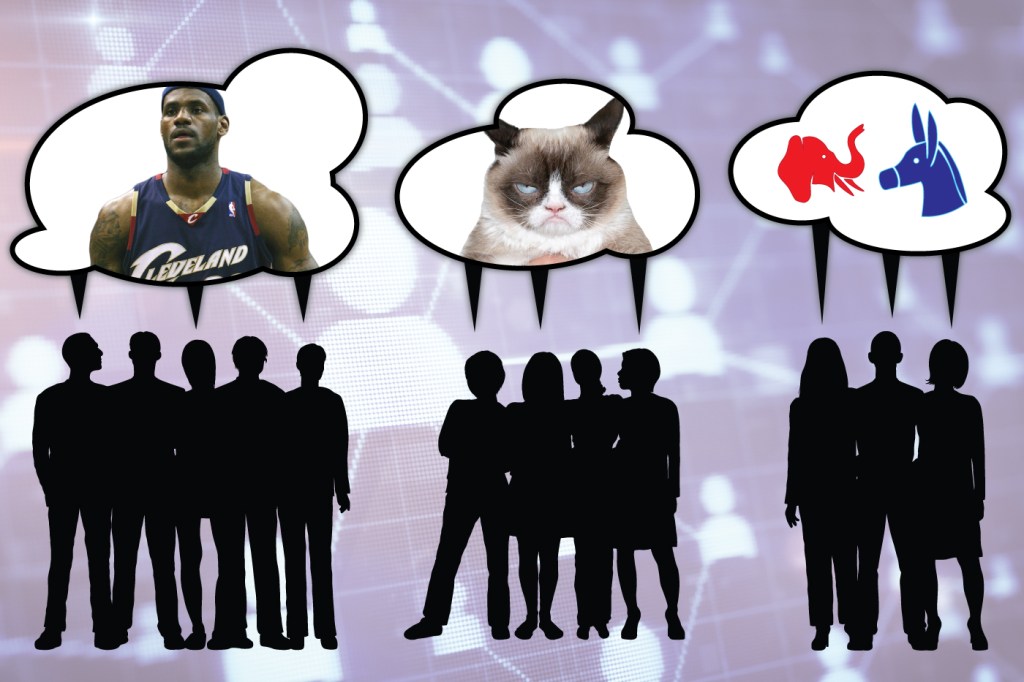3Qs: Trapped in social media ‘echo chambers’

Social media has become a go-to platform for people to express their opinions on the hot topics of the day, from the U.S. presidential campaign to the correct color of a dress.
 In many cases, when people share their strongly-held beliefs on a particular subject they are most likely sharing them with those who hold similar view points, thereby creating ideological isolation.
In many cases, when people share their strongly-held beliefs on a particular subject they are most likely sharing them with those who hold similar view points, thereby creating ideological isolation.
Here, Brooke Foucault Welles, assistant professor of communication studies in the College of Arts, Media and Design and an expert in social networks, discusses this trend and its impact on debate in the public realm.
How has the growth of social media communities, or “bubbles,” influenced public debate?
Social scientists have long been interested in the interplay between the media and public debate. With social media, in particular, there is some concern that people are becoming balkanized into “echo chambers” where they are only exposed to arguments and ideas they already agree with.
This could have the effect of reifying or even exaggerating ideological differences on topics of public debate such as gun control, racial justice, or foreign policy. Indeed, there is some recent empirical evidence that social media use is associated with increases in ideological segregation. But, the effects are modest for at least two reasons.
First, people have always clustered into groups of like-minded friends and acquaintances. In the study of social networks, we call this phenomenon homophily. It predicts that people tend to form relationships with others who share similar values, beliefs, and demographics. If you think about the friends you choose to spend your time with, chances are they are not so dissimilar to you. So, the idea that social media uniquely produces echo chambers is somewhat overblown—we naturally cluster with like-minded others, and this behavior also accounts for some of the “bubble” effects we see.
Second, there are very few people that only get their news and information from social media. Although recent reports suggest that many people get news from social media at least some of the time, there are very few people who exclusively use social media for news. People are still going to the homepages of their favorite news sources, watching television news, and reading news magazines. Of course, the media people choose to consume tends to be consistent with their ideological views more often than not. In communication studies, we call this selective exposure. Among the range of possible media sources and stories, we often choose to engage with the sources and stories that are most consistent with what we already believe.
That is not to say that we should not be critical of the social algorithms that sort and compile news based on our past preferences and interactions—there is always some risk that these algorithms could exacerbate ideological divides. But, we should also be mindful of the role that our own relationship and media consumption choices contribute to and complicate algorithmic filtering.
Are there specific groups or topics where these types of communities are most popular, and why?
The patterns I mentioned earlier—homophily and selective exposure—are consistent across a wide range of topics and ideas. There are lots of possible explanations for why we tend to choose friends and media that are consistent with our existing beliefs: it is physically and psychologically easier, it helps us develop our own opinions and sense of self, and it leads to more harmonious interactions overall.
The fact of the matter is that engaging with difference is hard. That difficulty might be easiest to see with polarized political issues, but these patterns hold across a range of ideas and experiences.
Are there any studies or theories that look at the difference between how people react to situations online compared to how they react in real life? And if so, what does that evidence show?
In communication studies, we have a few theories about why people might behave differently online and offline. One I find useful is called the Social Identity Model of Deindividuation, or SIDE.
SIDE theory says that people generally have consistent values and goals online and offline, but in our offline lives our personal (individual) values and goals are prioritized, and in the online world, our community or group’s (social) values and goals are prioritized (see 4). This partially explains why people might do or say things online that they would not do or say offline. The anonymity and reduced social cues of the internet encourage people to get caught up in the norms of groups and adjust their own behavior to be consistent with those norms.
This is not to say that you transform into a completely different person online, but if, for example, you are debating a political topic online and the general tone of the debate is hostile, you might be more likely to engage with that hostility online because you are following the norms of the group. There is some evidence that this prioritization of group norms leads to more polarization in online discussions.





